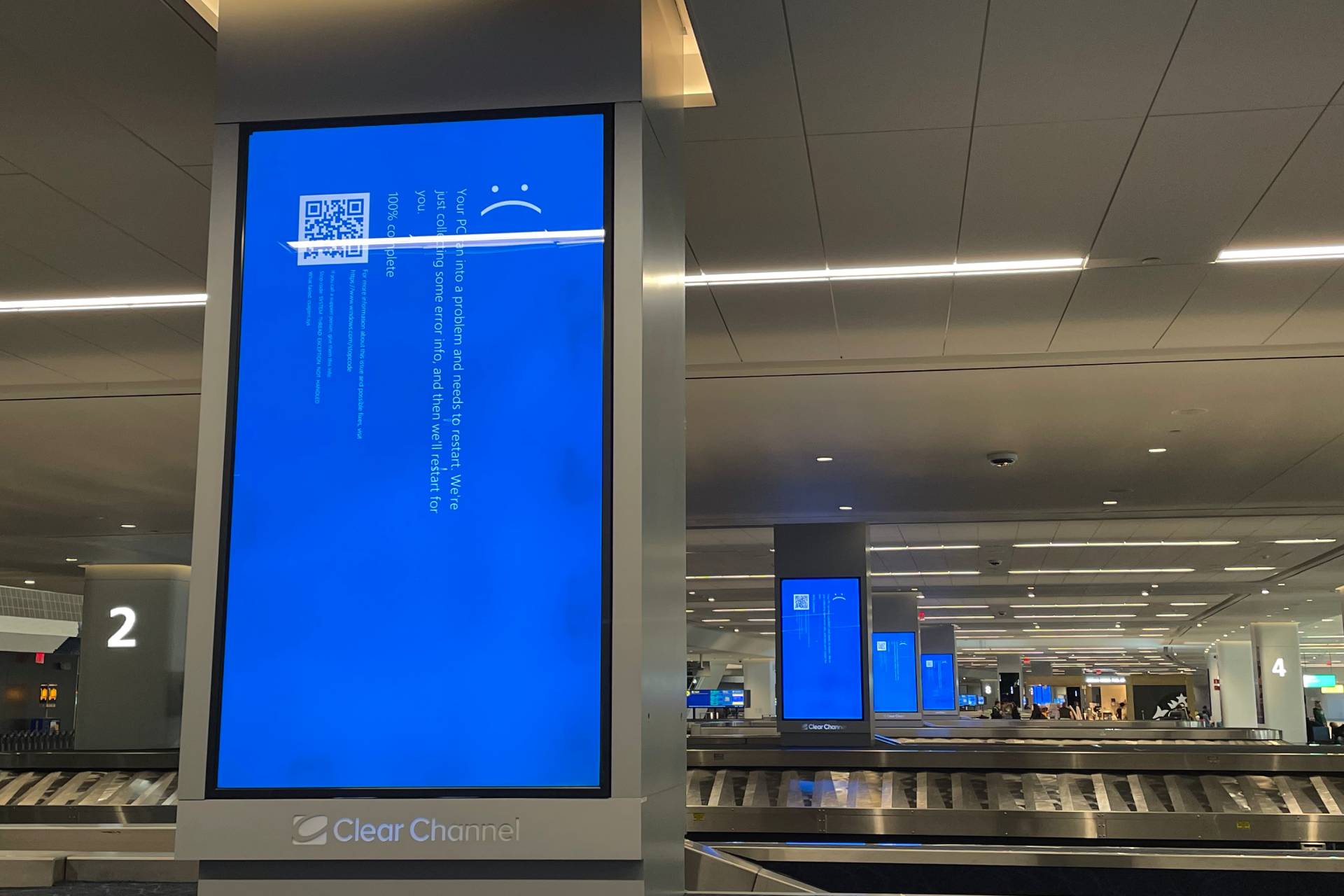A worldwide IT outage that left sectors across the globe in disarray is gradually being resolved, though delays and disruptions continue. However, experts have warned that many businesses could take days or even weeks to fully recover from the tech incident.
Labeled as the “largest IT outage in history,” the event has impacted numerous industries, including airlines, emergency services, and financial institutions, leaving millions scrambling for solutions.
The chaos began with a flawed software update for Microsoft Windows issued by cybersecurity firm CrowdStrike. The glitch affected an estimated 8.5 million Windows devices, causing critical systems to crash. While this represents less than 1% of all Windows machines, the impact was significant due to the nature of the services involved. Major airlines, businesses, government agencies, health and emergency services, banks, and educational institutions were among those hit hardest.
Air travel has been severely affected. According to FlightAware, more than 2,300 flights within, into, or out of the US were canceled, and over 6,000 were delayed as of Saturday afternoon. On Friday, the numbers were even higher, with over 3,000 flights canceled and more than 11,000 delayed. Major airlines have announced that services are being restored, but many passengers remain stranded and frustrated.
Cybersecurity nightmare
Adding to the chaos, cybercriminals took advantage of the situation, launching fake websites filled with malicious software aimed at unsuspecting victims. The US government and multiple cybersecurity experts have issued warnings about these scams, urging the public to stay vigilant.
CrowdStrike also issued a warning in a blog post about malicious actors attempting to exploit the situation by distributing a harmful ZIP file. The campaign appeared to be “likely targeting” CrowdStrike customers in Latin America, the company noted.
Ongoing recovery efforts
CrowdStrike CEO George Kurtz publicly apologised for the disruption and assured customers that the company is working tirelessly to resolve the issue. “We understand the gravity of the situation and are deeply sorry for the inconvenience and disruption,” Kurtz posted on X, formerly known as Twitter.
CrowdStrike released a statement outlining their ongoing efforts: “As stated in our social media post on 2024-07-21 at 2106 UTC, together with customers, CrowdStrike tested a new technique to accelerate impacted system remediation. We’re in the process of operationalising an opt-in to this technique. Customers are encouraged to follow the Tech Alerts for the latest updates and will be notified when action is needed. We will continue to provide updates here as information becomes available and new fixes are deployed.”
CrowdStrike clarified that the issue was caused by a defect in a recent content update for Windows hosts, with Mac and Linux hosts remaining unaffected. Importantly, this was not a cyberattack. The issue has been identified and isolated, and a fix has been deployed. The company also advised customers to check the support portal for updates and ensure they are communicating with CrowdStrike representatives through official channels. CrowdStrike assured that their Falcon platform systems are operating normally and that there is no impact on system protection if the Falcon sensor is installed.
Despite the fix, recovery has been slow due to the need for manual system restarts, which require expertise that not all affected customers possess. Experts warn that it will take time for all systems to return to normal.
This incident highlights the critical importance of robust cybersecurity measures and effective crisis management strategies. As operations gradually resume, the world is left to reflect on the vulnerabilities exposed by this massive outage and the need for stronger, more resilient systems to prevent future disruptions.
“This major outage has been caused by a bug that wasn’t caught by Crowdstrike before rolling out an update to thousands of companies globally,” said Graham Steel, head of cybersecurity product, SandboxAQ. “We all learned from the global SolarWinds catastrophe that we cannot blindly accept updates from software that impacts key systems. This outage should spur all companies to put in place systems that will analyse every update before it is allowed into their company. Recent consolidation in the cybersecurity market has increased the risk of this recurring – businesses rely on just a few vendors.
Meanwhile, Rick Vanover, VP of Product Strategy, Veeam Software, highlighted how the CrowdStrike outage demonstrated the organisations’ dependencies of the hyperscale public clouds, the Internet, and more for critical leading services.
“In this era of software as a service offerings (SaaS) powered in the cloud; this is a risk that we take. Generally speaking, hyperscale public cloud services offer better availability that most organisations can offer in their own data centre practices,” he said. “While a good track record is comforting, it is crucial to have a tested process in place to handle scenarios like this to diminish business disruptions. This involves being diligent and aware of which hyperscale public cloud services are part of your service stack, ensuring you are informed about any service interruptions and communicate accordingly, and evaluating if the business can continue during an extended outage. If not, identify and ramp up alternatives or concurrent offerings for coverage.”
Some experts also emphasised AI’s potential to play a crucial role in remediating issues. With its advanced algorithms and ability to process vast amounts of data quickly, AI can identify and address problems faster than traditional methods. Alois Reitbauer, Chief AI Strategist, Dynatrace, said, “Given the increasing complexity of software, all software developers and organisations are susceptible to outages. When outages do occur, organisations need the capability to pinpoint root cause and remediate immediately. AI-driven approaches have become essential for complex IT operations to deploy as manual processes cannot keep up. A power of three approach to AI leveraging predictive, causal, and generative AI is increasingly critical to help organisations deliver the highest availability and performance of software as well as minimise disruption to end user experience.”










Discussion about this post